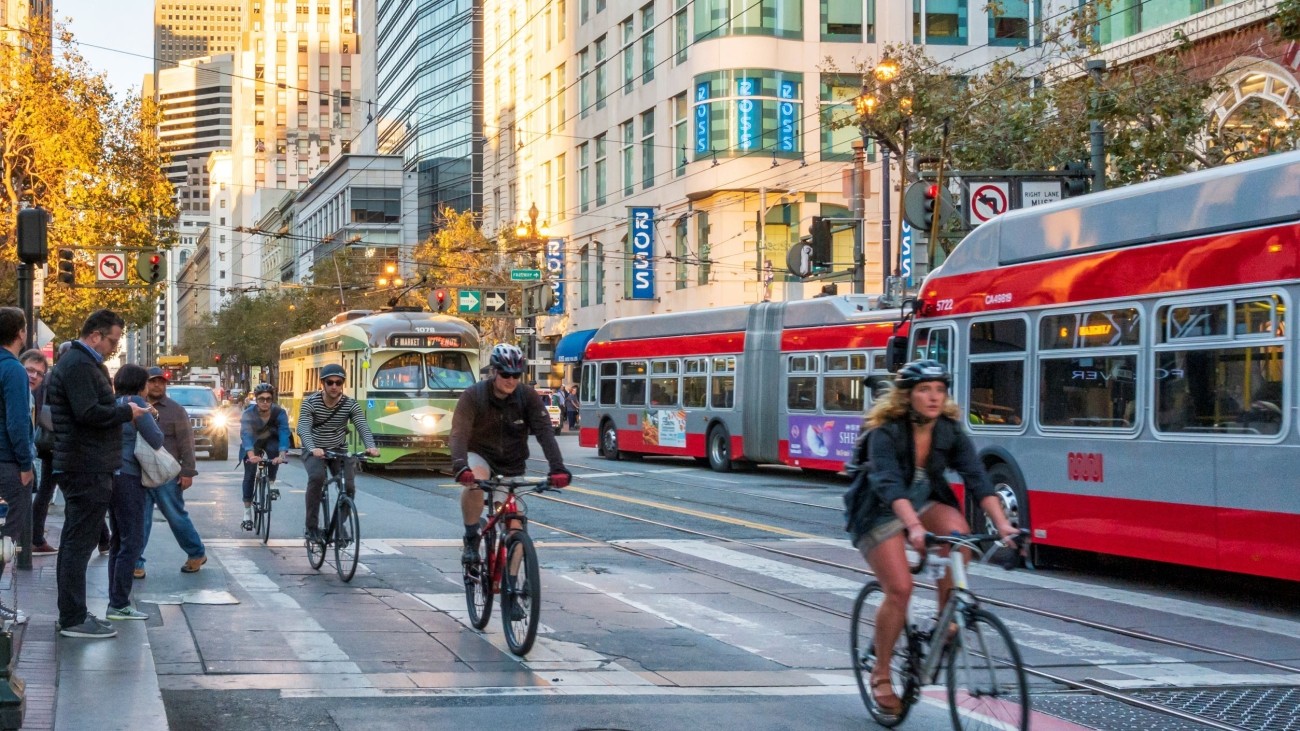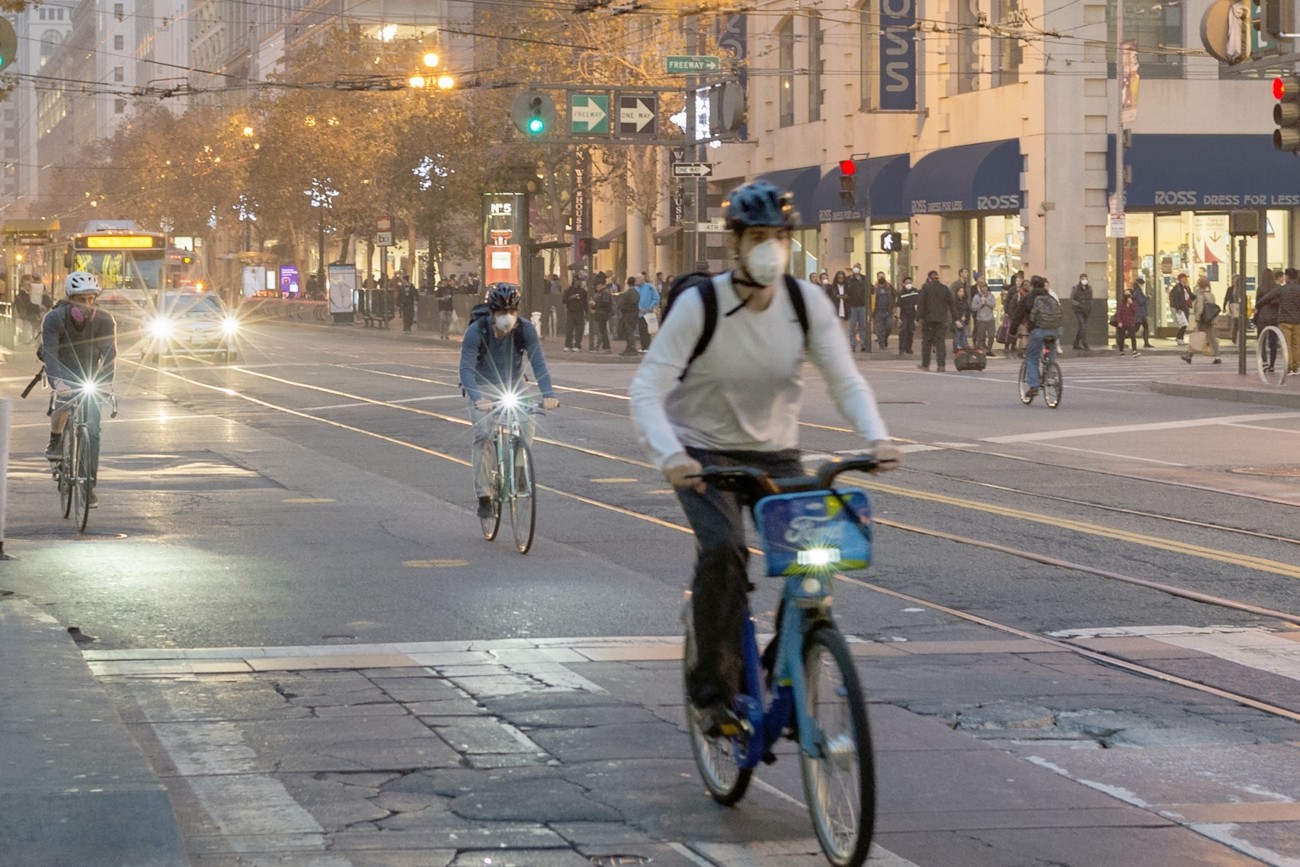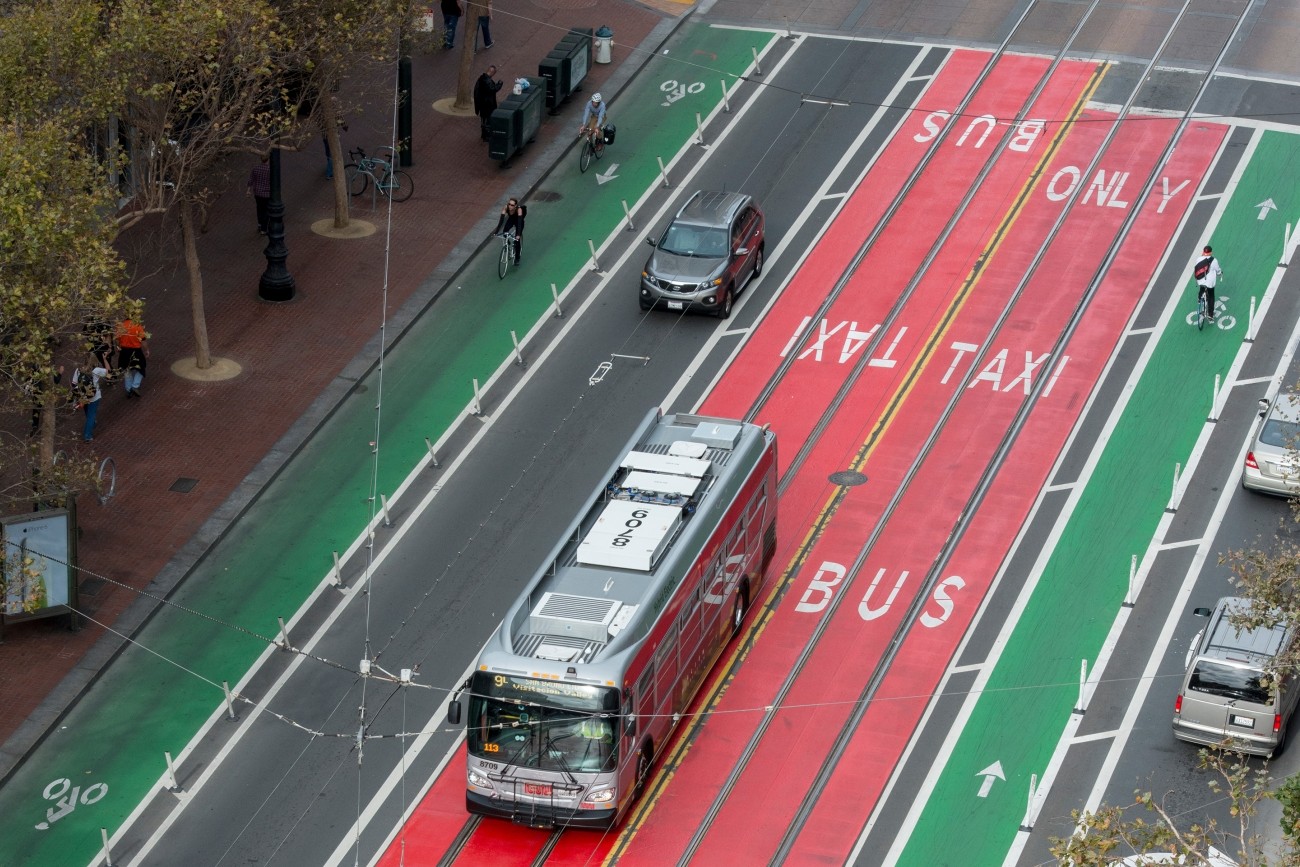
Photo by Sergio Ruiz, flickr
San Francisco has released the 2021 Climate Action Plan (PDF), a roadmap to achieving the city’s goal of net-zero greenhouse gas emissions by 2040. Released last month, the plan outlines strategies to combat climate change, address racial and social equity, and promote resilience and economic recovery.
The plan categorizes emission production and strategies for six sectors: Energy Supply, Building Operations, Transportation and Land Use, Housing, Responsible Production and Consumption, and Healthy Ecosystems.
Transportation and Land Use is the largest contributor to San Francisco’s emissions, accounting for 47% of the city’s total greenhouse gas emissions—private cars and trucks produce 72% of this total, while public transportation makes up 3%. The Transportation Authority helped quantify and analyze the emissions reduction benefits of land use and transportation strategies for the plan.
Strategies for reducing transportation emissions outlined in the plan include:
- Building an efficient and reliable transit system that becomes the preferred mode of transportation
- Creating a well-connected transportation network that shifts trips from automobiles to walking, biking, and other active transportation modes
- Promoting job growth and housing along transit corridors
- Accelerating the adoption of electric/zero-emission vehicles where motor vehicle use is necessary
See the full list of strategies, with proposed timelines and analyses, starting at page 82 of the Climate Action Plan (PDF).
The Transportation Authority advances these emission-reducing efforts by planning and funding projects focused on street safety and transportation accessibility. For example, the Geary Bus Rapid Transit project included more bus service, new bus-only lanes, improved signal timing, and other improvements to enhance transit reliability, efficiency, and accessibility.
The Transportation Authority also leads or supports long-range planning efforts such as ConnectSF, the San Francisco Transportation Plan, and Plan Bay Area 2050, which map out strategies and investments to promote transit-first policies and reduce emissions.
Meaningful investments and projects for improving transportation advance the city toward our emission goals and benefit all residents, especially our most vulnerable populations. The Climate Action Plan provides an overview of how each proposed strategy can benefit the community, such as advancing racial and social equity, improving public health, or ensuring a just transition to a zero-emissions future.
The Climate Action Plan launch was celebrated with the TEDxCityofSanFrancisco event, which features a curation of talks and performances to inspire community action in the fight against climate change.
Watch the replay of the event:
Resources
San Francisco Climate Action Plan (SF Environment)

